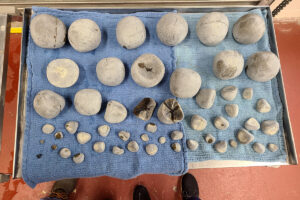Run-In Sheds
Dallas Goble, DVM, thinks quite highly of run-in sheds. They offer better quality health for the horse than enclosed barns, says the associate professor of surgery, College of Veterinary Medicine, University of Tennessee. Run-in sheds have”P>Dallas Goble, DVM, thinks quite highly of run-in sheds. They offer better quality health for the horse than enclosed barns, says the associate professor of surgery, College of Veter”>Dallas Goble, DVM, thinks quite highly of run-in sheds. They offer better quality health for the horse than enclosed barns,”Dallas Goble, DVM, thinks quite highly of run-in sheds. They offer “allas Goble
- Topics: Article, Barns and Sheds, Footing
Dallas Goble, DVM, thinks quite highly of run-in sheds. “They offer better quality health for the horse than enclosed barns,” says the associate professor of surgery, College of Veterinary Medicine, University of Tennessee. “Run-in sheds have better ventilation and less accumulation of dust mold and spores than what accumulate in a normal barn. They’re relatively safe–very few injuries are associated with sheds that are maintained in good condition. Individual horses have the opportunity to regulate where they want to be, and that’s good for the horse’s health and psychological well-being. Run-in sheds allow horses to act more like real horses. They’re very horse friendly.”
As most horse owners know, a run-in shed is a roofed, three-sided, free-access structure that offers protection to pastured horses from adverse weather. “In the winter, the run-in shed protects the horse from the elements of extreme wind or rain or snow,” explains Susan Raymond, BSc (Zoology), Respiratory Health and Air Quality Researcher, Equine Research Centre, Guelph, Ontario, Canada. “In the summer, it protects the horse by providing shade and also protects the horse from flies by being in the shade, as flies don’t go into the shade as much.” Many sheds contain a feedbox and water trough, and some are extended to house hay, grain, and tack.
But for run-in sheds to provide maximum safety and protection, it’s critical they be constructed and sited properly
Create a free account with TheHorse.com to view this content.
TheHorse.com is home to thousands of free articles about horse health care. In order to access some of our exclusive free content, you must be signed into TheHorse.com.
Start your free account today!
Already have an account?
and continue reading.
Related Articles
Stay on top of the most recent Horse Health news with

















